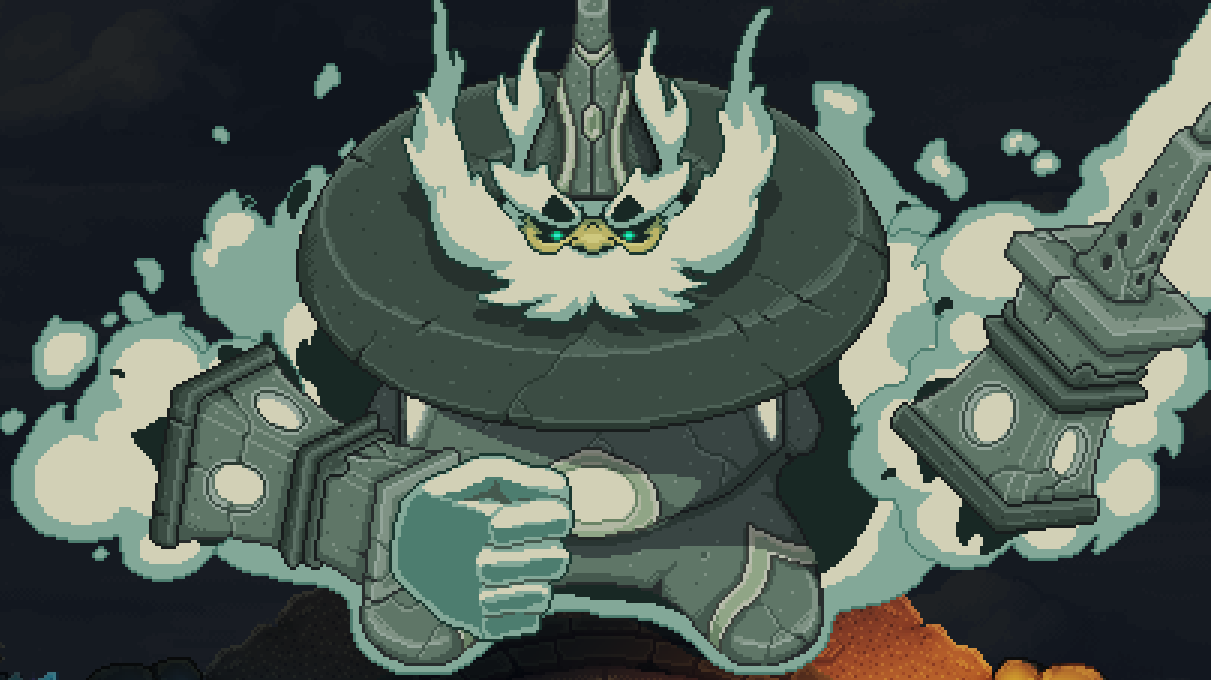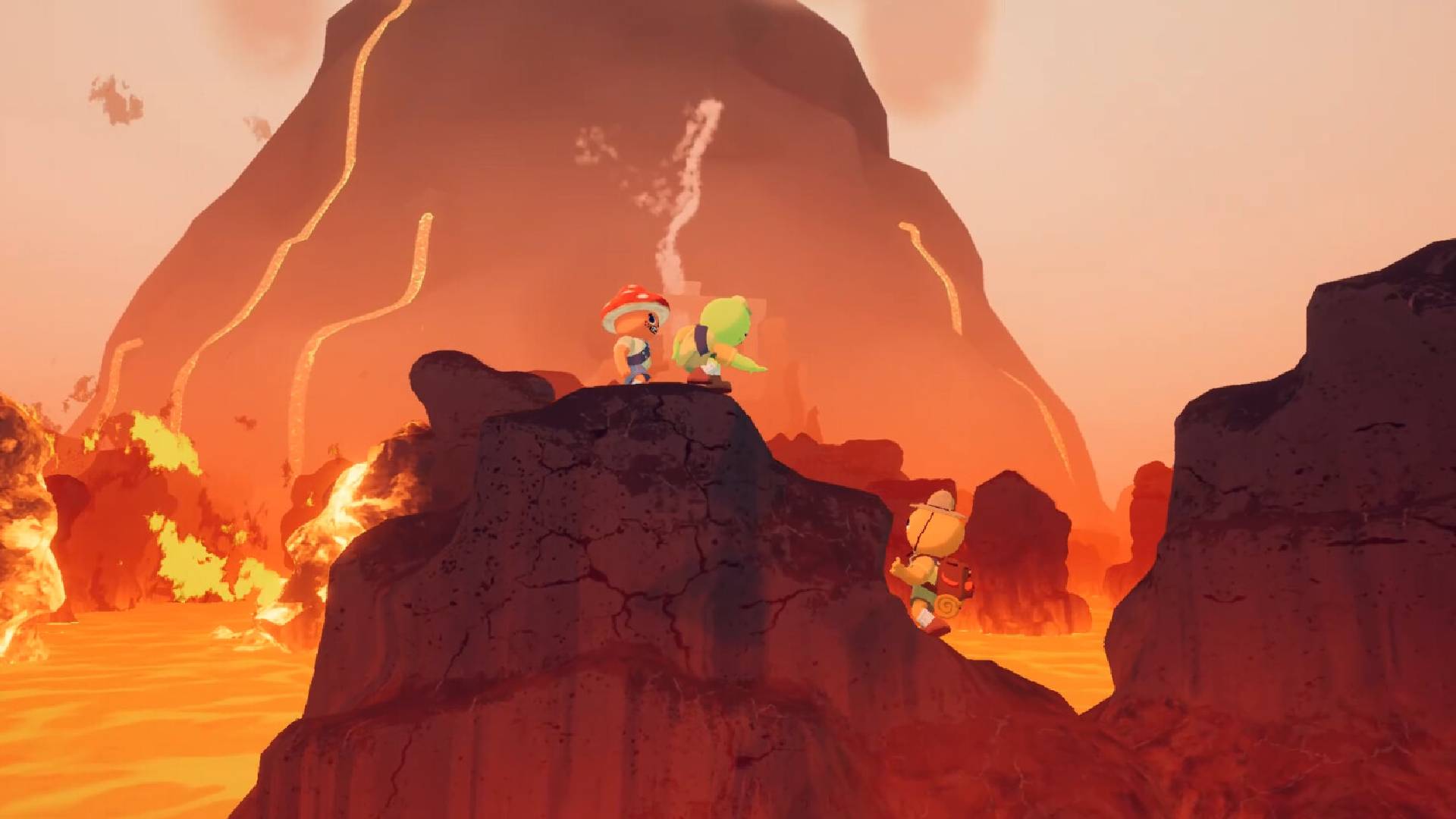
A throwback RPG that avoids mindlessly copying the '90s greats that inspired it.
Sea of Stars is another indie RPG inspired by unnamed yet obvious classics. This time around it’s (mostly) Chrono Trigger. There’s the seamless battle transition, there’s the techs—sorry, combos—there’s the Yasunori Mitsuda soundtrack, the cozy campfire, the overworld presented in a very Chrono Trigger-y sort of way. Been there, done that, got the time-travelling t-shirt.
What is it? A brand new RPG in the style of some very old ones
Release date: August 29, 2023
Expect to pay: $34.99
Developer: Sabotage Studio
Publisher: Sabotage Studio
Reviewed on: i7-10750H, RTX 3070 (laptop), 16GB RAM
Multiplayer? No
Steam Deck: Verified
Link: Steam
What separates Sea of Stars from the ever-increasing pile of RPGs that think they can recapture the spirit and sales of the ’90s is that it understands the difference between “inspired by” and “mindlessly copying.” As familiar as its foundations may be, every second spent with the game is a second spent with an adventure that’s more eager to be itself than it is Famous SNES RPG Clone #7632.
The most obvious way it draws a line between itself and the past is through its extremely—almost excessively—well-animated world. Anything that can sway in an unseen breeze or underwater current does so, and every mundane NPC or minor story event I came across seemed to have some unique flourish I saw once and then never again. The main cast have been lavished with even more attention, allowing them to move around their gorgeous surroundings with the sort of fluidity and ease their 1995 ancestors could only dream of.
Swimming, shimmying across narrow ledges, jumping across pillars, and balancing on ropes are all standard actions here, and this visual flexibility enables the world they wander through to be so much more interesting and organic than the traditional party-wide paths through supposedly fantastical environs.
Unbreakable genre rules dictate that our heroes’ athletic exploration must be broken up by fights with monsters vaguely themed around the local area, although Sea of Stars livens up these fixed encounters with a brilliant turn taking/breaking mechanic, making it possible to severely weaken or even completely interrupt potentially devastating special attacks before they’re set off—so long as I can unleash the correct combination of attribute-laden slashes and skills before their next turn comes around.
Whatever’s going on I need to pay attention, as the outcome of every battle depends as much on my own actions as it does my stats and equipment. Many of these attribute-laden slashes and skills can be enhanced or extended with a quick tap of a key, and incoming blows can be mitigated in the same way. The timing varies wildly depending on the party member in question and the skill being used, a small detail that helps to set the agile characters fond of fast flurries apart from the big bruisers.
Some enemies can be easily avoided if you’re quick (Image credit: Sabotage Studio)
Every battle blends seamlessly into its environment (Image credit: Sabotage Studio)
Every new area seems to look better than the last (Image credit: Sabotage Studio)
Curious clambering often leads to extra treasures (Image credit: Sabotage Studio)
Characters can be customised a little when they level up (Image credit: Sabotage Studio)
Well, that and the position everyone takes on each predetermined battlefield, which I don’t get to control. Sometimes it can be nigh-impossible to see a few timing-critical animations (the ninja-like Seraï in particular suffers from this, thanks to her portal-based antics), but on the whole the idea works well. A little MP is regenerated with every standard blow, cleverly nudging me to let loose and use every tool at my disposal as often as possible.
Sadly the screen-filling bosses that often wait at the end of the game’s puzzle-dusted dungeons are as much of a chore to fight as they are stunning to look at. They almost always have some sort of regenerative ability or “Hit these things to make the bit you actually need to strike become vulnerable” pattern to them and they quickly become frustrating slogs where they should be climactic spectacles.
Sea of Stars includes some optional relics to help smooth over its intermittent frustrations. These allow you to tweak the game’s difficulty to a certain degree, optionally reducing incoming damage, guaranteeing every regular hit is a double attack, etc. and they can all be bought for next to nothing very early on. I very much appreciated being able to sculpt my play experience so specifically, although I struggled to find a good reason not to use them. Fights didn’t feel more strategic without them—it just took a little longer to achieve the same result.
Mood-setting cinematics break up the action from time to time (Image credit: Sabotage Studio)
Thankfully you can’t actually fall off these high ropes (Image credit: Sabotage Studio)
Simple puzzles pop up often, but don’t spoil the flow (Image credit: Sabotage Studio)
As thoughtfully retro-modern as much of it is, the story can’t quite escape the less impressive parts of RPG history. The NPCs may look pretty, but by and large only have the same shallow one-line scraps of nondescript text their genre ancestors said 30 years ago. Whatever problem the latest village has can often only be solved with a quick trip through the dungeon-like area nearby. The special heroes with their unusually coloured hair tread the same path so many others have before them, and there’s a realistic chance you’ll guess every major plot twist before it happens.
In spite of these grumbles, there’s a sincerity to the game that just about manages to hold it all together. The poisonous meta humour that tends to rear its head in retro-styled indie games is in here (a giant being called Y’eet that flings the party great distances is one of them), but these instances tend to be rare and not dwelt on, rather than rushing in to undercut the plot out of fear that an adventure written in a ’90s style could only be liked ironically.
It’s an approach that honestly took me a little while to get used to. I was bracing myself for the piss-take, for the barbed reminder that this sort of thing is old hat and should only be enjoyed through a thick layer of sarcasm, but it never came.
Sea of Stars is “just” a breezy adventure in a pleasant land beset with classic RPG problems, knowing better than to stay in one place too long. It never lets its minor irritations grow into something more serious. The game may not reach the highest heights of the ones it draws inspiration from, but by daring to be different from not only the past but a good chunk of the present too, it comes a lot closer than most.



